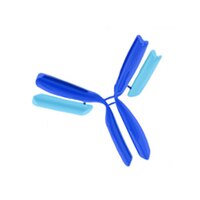AM04 Sigma-AldrichAnti-Bak (Ab-2) Mouse mAb (TC-102)
Anti-Bak (Ab-2), mouse monoclonal, clone TC-102, recognizes the ~30 kDa Bak protein in A431, HeLa, MCF-7, and SKBR3 cells. It is validated for Western blotting and immunofluorescence.
More>> Anti-Bak (Ab-2), mouse monoclonal, clone TC-102, recognizes the ~30 kDa Bak protein in A431, HeLa, MCF-7, and SKBR3 cells. It is validated for Western blotting and immunofluorescence. Less<<Synonyms: Anti-Bcl-2 Antagonist Killer
Recommended Products
Overview
| Replacement Information |
|---|
Key Spec Table
| Species Reactivity | Host | Antibody Type |
|---|---|---|
| H, M | M | Monoclonal Antibody |
| Product Information | |
|---|---|
| Form | Liquid |
| Formulation | In 0.05 M sodium phosphate buffer, 0.2% gelatin, pH 7.5. |
| Negative control | SKBR3 cells |
| Positive control | A431 cells, HeLa cells |
| Preservative | ≤0.1% sodium azide |
| Physicochemical Information |
|---|
| Dimensions |
|---|
| Materials Information |
|---|
| Toxicological Information |
|---|
| Safety Information according to GHS |
|---|
| Safety Information |
|---|
| Product Usage Statements |
|---|
| Storage and Shipping Information | |
|---|---|
| Ship Code | Blue Ice Only |
| Toxicity | Standard Handling |
| Storage | +2°C to +8°C |
| Do not freeze | Yes |
| Packaging Information |
|---|
| Transport Information |
|---|
| Supplemental Information |
|---|
| Specifications |
|---|
| Global Trade Item Number | |
|---|---|
| Catalogue Number | GTIN |
| AM04 | 0 |
Documentation
Anti-Bak (Ab-2) Mouse mAb (TC-102) MSDS
| Title |
|---|
Anti-Bak (Ab-2) Mouse mAb (TC-102) Certificates of Analysis
| Title | Lot Number |
|---|---|
| AM04 |
References
| Reference overview |
|---|
| Chittenden, T., et al. 1995. Nature 374, 733. Farrow, S.N., et al. 1995. Nature 374, 731. Kiefer, M.C., et al. 1995. Nature 736. Reed, J.C. 1994. J. Cell Biol. 124, 1. Korsmeyer, S.J., et al. 1993. N. Semin. Cancer Biol. 4, 327. |
Brochure
| Title |
|---|
| Caspases and other Apoptosis Related Tools Brochure |







